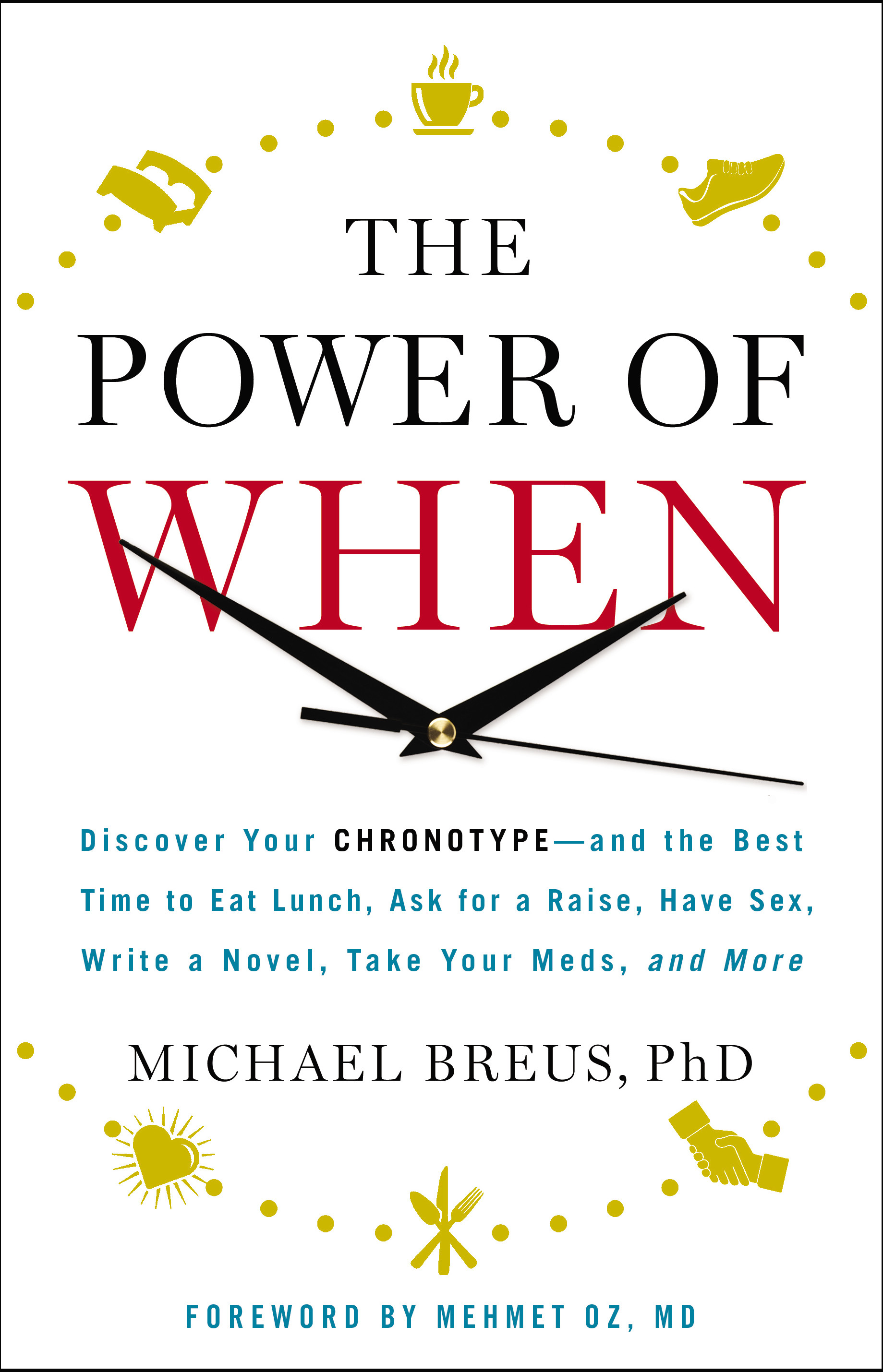
In our relentless quest to live healthier, happier, longer, more productive lives, we often overlook a powerful tool that’s right within us: the human body’s internal sense of timing. When it comes to health and wellness, most of the literature focuses on the what, how, and how much, with little focus on the when. Have you ever noticed that there are certain times of day when you do things better than others?
Our bodies are designed to coordinate the timing of almost all the aspects of life—sleep, work, sex, communication, even having fun. The body has a master biological clock, which keeps the body’s other clocks in sync. This master bio clock relies heavily on external cues of light and darkness, delivered along a pathway that travels from the optic nerve.
Clocks are different person-to-person based on a newly discovered PER3 gene. People with certain lengths of the PER3 genes prefer morning-centric activity, while those with other lengths prefer activity later on. Historically, people have been divided into three categories called chronotypes based on preference: “morningness,” “eveningness,” and “in betweenness.” My clinical experience has shown me an additional type: the troubled sleeper, or the insomniac. I created avatars for four distinct chronotypes: lions (the early risers), bears (the in-betweeners) wolves (the late-night people) and dolphins (the highly intelligent troubled sleepers). Based on your chronotype, there are bio rhythms (often based on hormone fluctuation throughout the day) attached to everything you do.
These preferences have played a distinct role throughout human evolution. Lions were the hunters, they woke early and found food for the community. Bears were the fabric of society, they were fun-loving and full of love and laughter. Wolves were the security team, who watched over the others as they slept. But our ancestors lived deeply in sync with the 24-hour solar cycle. That’s become harder to do.
The problem of when is a distinctly modern one. It became more noticeable with the onset of industrialization, and in particular as a result of two technological innovations: artificial light and long-distance travel. These remarkable innovations allowed human society to divorce itself from the solar day and night.
Until the 20th century, the limits of human capacity for travel fell closely in line with our biological clocks. It took about a day to travel the distance required to change time zones by a single hour—similar to the amount of time it takes the body to adjust to a one-hour shift in the solar cycle. With high-speed travel came the ability to breeze through multiple time zones in a day, subjecting our biological clocks to extreme disorientation. Our biological clocks are also thrown off by excessive and poorly timed exposure to artificial light. Especially with the advent of digital technology, it is now possible to live in a kind of perpetual dusk, an environment for which our bodies are profoundly ill-suited.
Today, social time and biological time exist in deep conflict, and the external timing of daily life seems to unfold with little or no regard for our biological rhythms. Work schedules misalign with chronotypes, particularly for the millions of people who perform shift work. School start times are opposed to the bio rhythms of young people, who generally move into a late-leaning chronotype during their teenage years and early 20s.
The result of this persistent neglect of bio time? Our biological clocks and rhythms are in chronic states of confusion, receiving mixed messages from our perpetual exposure to light and from the schedules we maintain in deference to social time. In the past 15 years, there has been a landslide of scientific data indicating a relationship between chrono-misalignment and the major diseases of our time: cardiovascular disease, obesity, diabetes, depression and cancer. These and other illnesses, which curtail lives and cost billions, are profoundly influenced by when.
There’s no easy solution to this problem. But simply being aware of your own personal clock can make you happier in your personal life and more productive and successful at work.
Want to be a better problem solver? Research shows analytical problems are best solved when the brain’s alertness rhythm is at its peak, while creative problems are best tackled during times of off-peak alertness.
Want to add vigor to your sex life? For most chronotypes, morning—when sex hormones reach their 24-hour peak—is an ideal time for sexual activity: the worst time is after 11 p.m. when those same hormones reach their daily nadir.
Want to broach a serious topic of conversation? In general, the best time is around 5 p.m., because people tend to be in better moods in the early evening. By 11 p.m., they tend to be tired, making the heated discussion itself—and not its resolution—more likely to end up in their long-term memory.
You don’t need to attempt to live like our pre-industrial ancestors to reap the benefits of a biological clock in sync. With awareness and attention, it’s possible to make simple changes to the when of living that can have a transformative effect on health and well-being.
More Must-Reads from TIME
- Where Trump 2.0 Will Differ From 1.0
- How Elon Musk Became a Kingmaker
- The Power—And Limits—of Peer Support
- The 100 Must-Read Books of 2024
- Column: If Optimism Feels Ridiculous Now, Try Hope
- The Future of Climate Action Is Trade Policy
- FX’s Say Nothing Is the Must-Watch Political Thriller of 2024
- Merle Bombardieri Is Helping People Make the Baby Decision
Contact us at letters@time.com